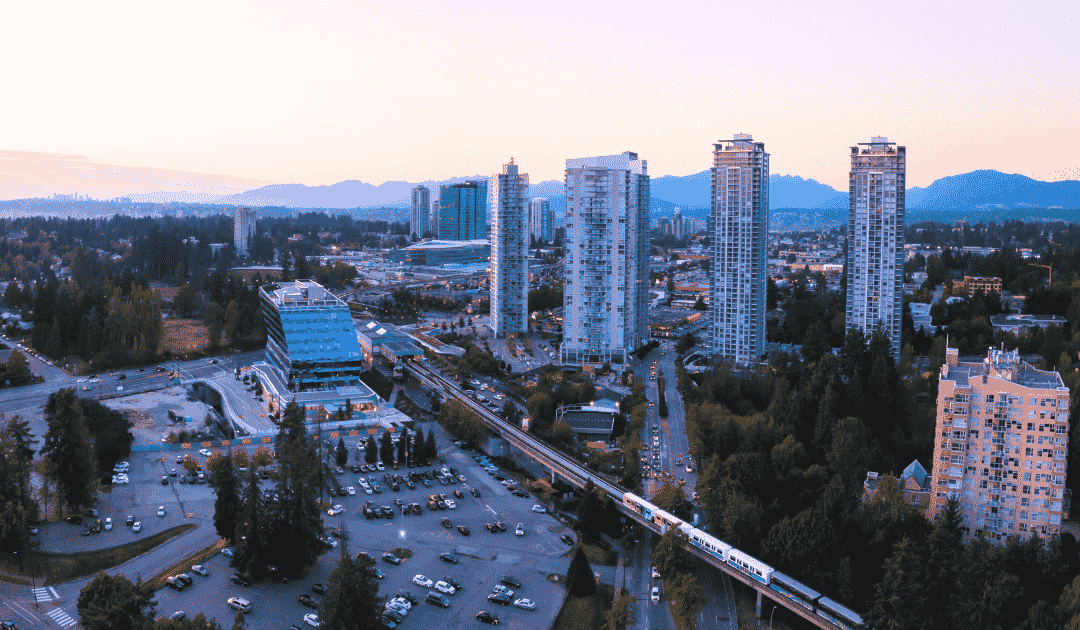If you’re a real estate professional who grew up in the ’80s or ’90s, the word “mall” likely elicits memories of water fountains, cinnamon-sugar pretzels and Orange Julius. But in today’s market, the concept of a “mall” has shifted dramatically — much like the rest of the real estate landscape.
Harp Khela, president at Khela Real Estate Group based in British Columbia’s Fraser Valley, has seen this transformation evolve throughout over 17 years as a broker. So when it was announced earlier this year that Strawberry Hill Shopping Centre, located in Surrey’s Scott Road corridor, was sold with plans for future development, this news didn’t come as a shock to him.
Not only a cheaper option but also one where people want to raise families
“It wasn’t surprising,” Khela says. “All of the large shopping centres are going through densification around the Skytrain and key transit areas.”
The Fraser Valley, a traditionally suburban region about one hour east of Metro Vancouver, and nearby cities like Surrey have undergone tremendous growth over the last decade, including a rise in housing inventory, jobs and commercial spaces like malls. According to the City of Surrey, it has experienced a 22 per cent employment growth rate over the past 10 years.
“The job creation is here,” adds Khela. “Now, the population is increasing rapidly; so it’s not just a cheaper option anymore for people, it’s more so a place where they actually want to raise their families.”
Growth and existing infrastructure: A need for balance
But not everyone in the Fraser Valley is happy with this growth.
“I think you have people that have lived in certain areas for a very long time, in older neighbourhoods that are now densifying,” Khela continues. “Developers and planners will need to deal with this as they densify, and as they’re allowing projects to move forward, they’ll be keeping those people in mind so that they can have buffers or create setbacks that allow them to still enjoy their properties.”
The Smith neighbourhood, located in the popular Willoughby community in Langley, is a prime example of how developers are balancing the need for growth while maintaining the existing housing infrastructure in place.
Apcon Group, a real estate developer also based in the Fraser Valley, has been creating a mixed-use project called The Hive located directly next to Willoughby Town Centre. As a newer retail shopping centre, it was positioned as a “walkable lifestyle centre” — a relatively new concept in the Fraser Valley that sits in sharp contrast to traditional models like Strawberry Hill Shopping Centre that rely heavily on vehicle traffic.
A complementary — not competing — tenant mix: Bringing essential resources to underserved communities
Tejvir Atwal, managing director of Apcon Group, paid close attention to how the community has responded to all of these development changes, particularly with the Smith Neighbourhood Plan updates on the horizon with the Township of Langley.
“The amendment brings a great change to the area,” Atwal shares. “The Township has done a great job balancing community resources with development by bringing recreational and essential resources to an underserved community. This will benefit the community as a whole as it continues to experience growth.”
Balraj Rai, also with Apcon Group, adds her insights: “It feels like it’s a very delicate dance,” she admits.
Both Rai and Atwal understand the importance of creating a tenant mix that complements, not competes, with the existing infrastructure of Willoughby Town Centre. Communication between all stakeholders, even if interests are different, ultimately benefits the neighbourhood as a whole.
A two-fold retail approach
“I think it’s two-fold,” continues Rai. “One part is making sure that each category of service has enough coverage, but it has to be balanced between it all, taking into consideration what is already existing around.
Secondly, at least from what I’ve seen, having an anchor tenant is very important. For your anchor tenant, you’re going to want somebody who is more of an established company, a little more known. That becomes very attractive for other companies and businesses to want to be there as well.”
Janice Barroso, a resident of the Smith neighbourhood, lives within walking distance of Willoughby Town Centre. The anchor tenant there is a grocery store, which has been beneficial for Barroso and her daughter.
“I would say that the most important thing there for sure is the grocery store,” she shares. “Especially when there’s a snowstorm or something, you don’t need to drive, you don’t need to worry, you can just walk across the street.”
Addressing new needs that stem from commercial & residential changes
These commercial and residential additions to the Smith neighbourhood inevitably create other needs from the resulting changes.
Even with an emphasis on a pedestrian-oriented neighbourhood, the Township of Langley will need to address various vehicular issues along 208th Street, including the addition of new traffic lights and the creation of new local roads.
What the future holds: Demand continuing upward — there’s ‘never been higher pressure to sell’
With the sale of Strawberry Hill Shopping Centre, along with the rise of other models of retail shopping experiences like Willoughby Town Centre, the future horizon of other shopping centres in the Fraser Valley remains unclear. But based on what’s happening in the market, Khela sees the demand to sell continuing on its upward trend.
“What’s happening with these shopping centres, with high interest rates, there’s never been higher pressure to sell,” he says. “Cap rates are still low. You can still demand a lower cap rate due to the underlying land value.”

Jamie (she/her) is a Writer with Real Estate Magazine, as well as Partner of a marketing agency, Burke By Burke, with her husband Eddie. She is an avid reader, self-proclaimed foodie, urban land economics enthusiast, Barry’s Tea drinker and part-time yogi. She lives, works and plays in Port Moody, BC, on the ancestral and unceded homelands of the kʷikʷəƛ̓əm (Kwikwetlem), səlilwətaɬ (Tsleil-Waututh), xʷməθkʷəy̓əm (Musqueam), Sḵwx̱wú7mesh (Squamish), q̓ic̓əy̓ (Katzie), qʼʷa:n̓ ƛʼən̓ (Kwantlen), qiqéyt (Qayqayt), and Stó:lō (Sto:lo) Peoples















